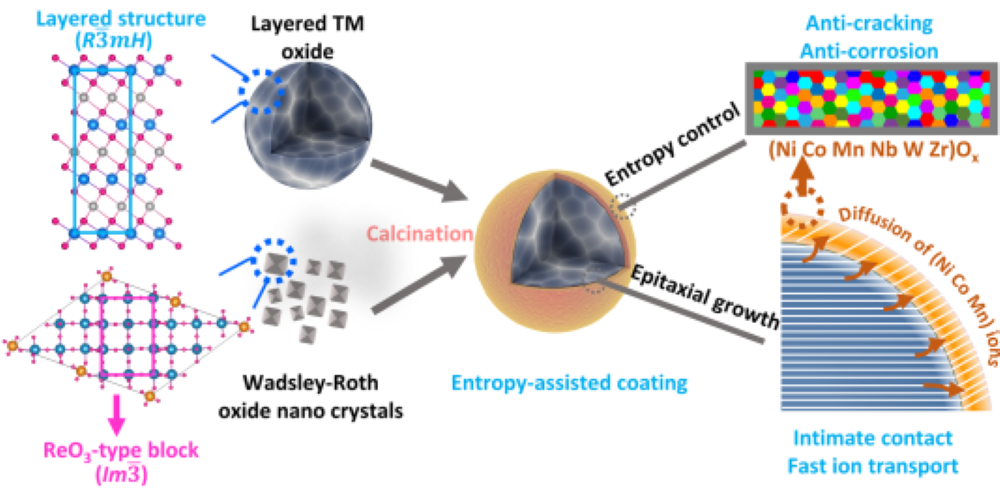Safe and efficient energy storage is important for American prosperity and security. With the adoption of both renewable energy sources and electric vehicles on the rise around the world, it is no surprise that research into a new generation of batteries is a major focus. Researchers have been developing batteries with higher energy storage density and, thus, longer driving range. Other goals include shorter charging times, greater tolerance to low temperatures, and safer operation.
One of the more promising such batteries has a lithium-containing cathode supplemented with nickel, manganese, and cobalt (NMC). At the U.S. Department of Energy’s (DOE’s) Argonne National Laboratory, a team of scientists has recently developed a new coating method for NMC cathodes with high nickel content, which boosts the energy density substantially. The cathode is the positively charged battery component that supplies lithium ions that shuffle between it and the battery’s negatively charged electrode, called the anode, during cycling.
“An NMC cathode was invented at Argonne in the early 2000s and has been used for lithium-ion batteries in many electric cars,” said Guiliang Xu, a chemist at Argonne. “Consumers want such batteries to have an even higher energy storage capacity, and thus longer driving range, and to charge faster. The nickel-rich version of NMC offers that. But these performance demands have historically caused rapid cathode degradation with repeated charging and discharging. The key problem has been particle cracking.”


